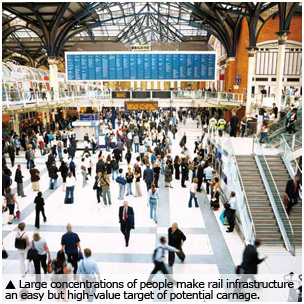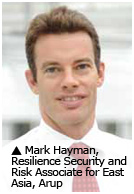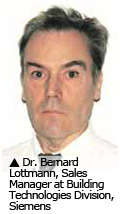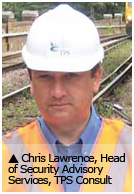In a time when climate-changing pollution and falling oil production are major issues of concern, high-speed rail (HSR) has emerged as an alternative mode of economical long-distance travel and a booster to economic development.
In a time when climate-changing pollution and falling oil production are major issues of concern, high-speed rail (HSR) has emerged as an alternative mode of economical long-distance travel and a booster to economic development.
Europe and Japan pioneered the HSR movement in the early 1900s, but the real breakthrough is coming from China these days. Already home to more HSR lines — 6,920 kilometers of tracks with trains running at speeds up to 400 kilometers per hour — than any other country in the world, China has plans to double its HSR network by 2012, with investments worth more than US$120 billion. This ambitious venture has created a huge ripple effect.
Encouraged by a recent visit to China, South Africa's Minister of Transport Sibusiso Ndebele is advocating for the construction of a multibillion-Rand HSR link between Durban and Johannesburg. The U.S., after generations of investing in highways and air transit, is also turning a corner. In September, the US Congress added an additional $2.3 billion to the original stimulus bill of $8 billion among 31 states to begin developing America's first nationwide high-speed intercity passenger rail service.
Amtrak recently released its next-generation HSR plan, investing in more than $117 billion to reduce travel times in the northeast, with trains operating up to 350 kilometers per hour on a new two-track corridor. Upon its completion in 2040, HSR ridership will likely approach 18 million passengers per year, with room to accommodate up to 80 million annually as demand increases. Over a 25-year construction period, the project will create more than 40,000 full-time jobs annually to build new tracks, tunnels, bridges, stations and other infrastructure. More than 120,000 permanent jobs along the corridor and in rail operations are predicted by 2040. In addition to significant travel time savings between major cities, tremendous mobility improvements would come with environmental, energy and congestion mitigation benefits.
As HSR revolutionizes the way people travel, safety and security needs for solutions to address new challenges while maintaining convenience and accessibility are at an all-time high.
Long waiting lines and shoes-off security routine is a classic scenario in most international airports. Perhaps this explains why more people are opting for the tracks rather than the skies in recent years. While 100-percent passenger screening is unrealistic for rail, keeping it to an absolute minimum is unacceptable as confined environments, 24/7 accessibility and large concentrations of people make rail infrastructure an easy but high-value target of potential carnage.
In the initial stages of any rail security project, what constitutes as security differs among operators and is thus budgeted in multiple ways. “Security could comprise technical solutions, security manpower, platform turnstiles, crisis planning and emergency response measures,” said Philip Lomax, Associate VP of Security for Kroll, a risk-consulting firm.
 The budget allocated for rail security depends on threat and risk assessments, national policy, standards and the complexity of the network. For most cases, only a few percent is earmarked, said Mark Hayman, Resilience Security and Risk Associate for East Asia, Arup. “Security budget for either regular rail (RR) or HSR is often negligible, representing only a small percentage of the electrical and mechanical part and even the overall budget,” added Dr. Bernard Lottmann, Sales Manager at Building Technologies Division, Siemens.
The budget allocated for rail security depends on threat and risk assessments, national policy, standards and the complexity of the network. For most cases, only a few percent is earmarked, said Mark Hayman, Resilience Security and Risk Associate for East Asia, Arup. “Security budget for either regular rail (RR) or HSR is often negligible, representing only a small percentage of the electrical and mechanical part and even the overall budget,” added Dr. Bernard Lottmann, Sales Manager at Building Technologies Division, Siemens.
There is minimal difference between the security approaches for RR and HSR, as the main advantage of rail travel is easy accessibility. Stringent security measures would be impractical due to dense passenger flow and the need for trains to run on a schedule. However, some HSR networks have separate access points to platforms and could therefore be controlled more easily, Lottmann said. “As HSR passengers are generally traveling longer distances, they tend to carry more luggage, something that has to be monitored. Passengers and their luggage are checked by scanning/ screening devices before boarding, and access to the trains is controlled via barriers.”
Threat levels and investment drivers are inherently linked to each other and differ for RR and HSR. “RR threats are much lower and not really a driver for investment,” said Chris Lawrence, Head of Security Advisory Services, TPS Consult. “For example, RR addresses people crime such as vandalism and graffiti.”
Several factors influence investment — how the network is designated, screening of people and bags, and competition with other modes of long-distance travel such as airplanes. “If the network is designated as critical infrastructure, hardening of stations or control facilities is necessary,” Hayman said. “Furthermore, in order to ‘win the battle,' HSR must maintain the differentiators such as comfort and accessibility. Security investment may be part of the means to ensure this.”
System Design
 Initial system planning and design for rail projects are specified with technologies appropriate to their high availability and safety-critical environment. “Unlike RR projects, HSR usually forms part of the national infrastructure. As such, it is subject to more detailed scrutiny regarding factors such as EMC, mean time between failures (MTBF), regulatory approval and thru-life support costs,” said Richard Lack, Director of Sales and Marketing, Application Solutions (ASL Safety and Security). While international security design standards are nonexistent, there are “industry best practices” that stem from previous experiences. “There are measures which are always considered,” Lomax said. “The s e inc lude monitoring of access points, vertical transportation, platforms and in some areas within the train carriages themselves.”
Initial system planning and design for rail projects are specified with technologies appropriate to their high availability and safety-critical environment. “Unlike RR projects, HSR usually forms part of the national infrastructure. As such, it is subject to more detailed scrutiny regarding factors such as EMC, mean time between failures (MTBF), regulatory approval and thru-life support costs,” said Richard Lack, Director of Sales and Marketing, Application Solutions (ASL Safety and Security). While international security design standards are nonexistent, there are “industry best practices” that stem from previous experiences. “There are measures which are always considered,” Lomax said. “The s e inc lude monitoring of access points, vertical transportation, platforms and in some areas within the train carriages themselves.”
Geographical Differences
Threat and risk assessment aids in the design of a solution appropriate to certain geographical requirements. “The solution could be cognizant of other regional or global benchmarks or standards but would be tailored to fit the local area,” Hayman said. “Both RR and HSR may cover major geographical areas, but, arguably, the effects of certain risks on HSR may be more dramatic than on RR. This may make HSR a more attractive target and justify a higher security standard. If cross-border issues are involved, this also raises the profile. On the other hand, a domestic RR service, especially a crowded commuter type, offers the easiest target for certain extreme events.”
Distance Covered
 Due to the difference in distance covered by RR and HSR, security aspects can vary greatly in size and scope. “Security aspects for RR are generally under the control of officers located at a single control center and commonly integrated into communication or building management systems,” Lottmann said. “For HSR, smaller systems include surveillance, access control and perimeter security components covering a local area and controlled by a station manager. Larger, more complex solutions might constitute a countrywide, multiagency system.”
Due to the difference in distance covered by RR and HSR, security aspects can vary greatly in size and scope. “Security aspects for RR are generally under the control of officers located at a single control center and commonly integrated into communication or building management systems,” Lottmann said. “For HSR, smaller systems include surveillance, access control and perimeter security components covering a local area and controlled by a station manager. Larger, more complex solutions might constitute a countrywide, multiagency system.”
The differences in distances affect the number of stakeholders. “An HSR project may have multiple stakeholders with varying local and national security considerations,” Lack said. Thus, harmonization and concept-matching of security systems are important, as is the collaboration of different security operators and companies involved, Lottmann added.
Additional Measures
Business travelers view HSR as an alternative to air travel. “In many terminals, HSR and RR passengers occupy the same general areas; so, much of the security infrastructure design overlaps,” said Brian Karas, Director of Field Engineering for VideoIQ.
While that may be the case, extra security measures are usually undertaken at the station, including passport control areas and other restricted zones. “The presence of security equipment is often intensified by the requirement for access and throughput control between areas,” said Mark Marriage, founder and CTO for COE (a Digital Barriers company). “Integration of alarms and notifications from complementary systems into the video management system is an additional area where the requirement may be greater for HSR networks against RR networks.”
Video analytics is also fast becoming one of the most demanded technologies. “Analytics provide the technology to transform the role of safety and security workforce from monitors to responders,” said Edward Tella, Solutions Leader for Safety, Security and Surveillance, Travel and Transportation, IBM.
However, limitations such as bandwidth and real - time transmission disable continuous surveillance of the entire journey, Lottmann said. “The most widely used method of transferring and analyzing onboard video data now is to retract images from a removable hard disk.”
Specification/ Evaluation Process
 Aside from reliability and performance, risk analysis is imperative for evaluating security systems, especially when transportation has become a more common target for attacks. “Security concepts and levels are now derived from the individual analysis of each installation, and experience gained from previous situations drives performance criteria,” Lottmann said. Specifications are usually drawn out from national requirements or go through an industry practice. “In Europe, there are various standards that equipment must meet; whatever is specified goes down in criteria,” Lawrence said.
Aside from reliability and performance, risk analysis is imperative for evaluating security systems, especially when transportation has become a more common target for attacks. “Security concepts and levels are now derived from the individual analysis of each installation, and experience gained from previous situations drives performance criteria,” Lottmann said. Specifications are usually drawn out from national requirements or go through an industry practice. “In Europe, there are various standards that equipment must meet; whatever is specified goes down in criteria,” Lawrence said.
Operational Requirements
All systems should be designed to fulfill specific operational requirements, which are driven by strategy. “Their purposes and how they are related/interfaced to other elements of the solution must be clearly stated,” Hayman said. “There should be a balance among operational security (such as procedures, guards, and command and control), electronic security (such as surveillance, access control and intrusion detection) and physical security (such as fences, barriers, architecture and crime prevention through environmental design).” For increased efficiency, there is a need for data recovery capabilities as well, Lottmann added.
Deciding Factor
In light of the tough economic climate, cost concerns are always an issue. However, performance and necessity should not be overlooked. “Price is not always the deciding factor in the specification of security systems for rail networks,” Lottmann said. “The perceived need for security arrangements varies widely, according to different mindsets and cultures. This fact naturally affects purchasing decisions and specifications of high-end solutions.”